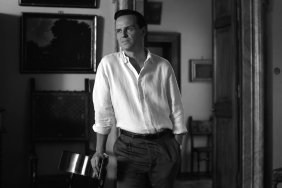Author Jay Asher talks about the bestselling dark mystery book that served as the basis for the Netflix series 13 Reasons Why
Released in 2007, Jay Asher’s 13 Reasons Why quickly became a novel that spoke to millions. Telling the story of Hannah, a young woman whose suicide is slowly made sense of via a series of tapes sent to a classmate, the novel offered a realistic and at times scary look at suicide, rape and bullying and how sometimes a tragic event isn’t spawned by a single action, but multiple ones. There’s a sense of authenticity to 13 Reasons Why and its success through the years is a deserved one and, in this writer’s opinion, it’s a very important story that needs to be read. Ten years later, Asher’s novel is still going strong, recently hitting #1 on the USA Today bestseller list and being given another life thanks to the recent release of Netflix’s limited series adaption 13 Reasons Why, starring Dylan Minette and Katherine Langford. The series is already on its way to quickly becoming one of the most talked about TV shows in a long time and like the novel, its refusal to look away from very serious topics is causing people to take notice of bullying and suicide prevention and open up dialogue to talk about an epidemic that affects a large amount of people every day. We recently spoke to Asher about the lasting power of 13 Reasons Why, its importance and his upcoming graphic novel, Piper.
ComingSoon.net: 13 Reasons Why turned ten years old this year. Looking back, did you ever think it would not only be as well received as it has been but that it would have multiple lives?
Jay Asher: No, never. In fact, while I didn’t tell my publisher this until much later, I did not expect it to sell well at all. I thought there could be a small but hardcore group of people who really loved it. But I did try to write it as if one day it would be interpreted as a movie, thinking it could visually be very powerful.
CS: There’s something truly important to the novel, its realistic approach and heartfelt characters stand out very much. I’m curious where the inspiration for the book came to be, it feels rooted in reality in some way.
Asher: All of the reasons Hannah describes were based, at least loosely, on situations I’d either experienced or heard about, mostly from my wife or close female friends. While Hannah wasn’t specifically based on anyone, her character always felt very real. So it was a matter of interpreting those situations through her thoughts and feelings. But, years before I came up with the premise, a close relative of mine attempted suicide when she was also a junior in high school. When I eventually did come up with the idea, it was obvious why it came to me as a female in high school.
CS: The back and forth between the events that led to the character of Hannah to suicide and the present day journey of Clay go hand in hand so well. Was it difficult to utilize that approach and was that always the plan?
Asher: It was always the plan to do that back and forth, and I began writing it just as it appears in the book, but it was too difficult to keep their voices distinct. So I started over, writing only Hannah’s side of the story from beginning to end. That took about eighteen months, and then I went back and brought Clay into the narration. Because I had forgotten many of the ways Hannah told her story, if I had a strong reaction while reading her words, I gave a similar reaction to Clay, always seeing him as the eyes and ears of the reader.

CS: The book and the new Netflix series tackles suicide, bullying and rape very realistically and doesn’t hold back any punches when forcing its reader and viewer to confront the fact that these are very real situations and topics that unfortunately happen everyday. That honesty and bravery makes me feel that though it could be too much for some, it feels like it should be a requirement for high school students to read the book or watch the series and helps shine a light on these very important issues. How do you feel about how your book has led to this?
Asher: Thank you. That raw and honest approach was my first big decision I had to make when writing the book, and the writers of the series felt the same way. These things happen, and to give respect to the people they do happen to, it felt wrong to hold back. It needs to be uncomfortable to read or watch. If it’s not, and we pull away, it felt like the story would only contribute that problem of not truthfully tackling these things. We’re already good at avoiding uncomfortable subjects, and that needs to change.
CS: As a lifelong California native, I love the locale in the novel. Were you inspired by anywhere in particular when writing the book? I know you were from SLO (San Luis Obispo).
Asher: While I wanted the book to feel like it could happen in any part of the country, which is why I never named the town, I heavily envisioned it as a cross between San Luis Obispo and Arcadia, California. SLO is where I spent my teen years, and Arcadia is where I lived before that.
CS: The Netflix series is blowing up right now and rightfully so, it’s extremely well done, acted and like your novel, is very relevant to today’s youth and in fact anybody who has ever struggled with suicide and bullying. How does it feel to see something you created be translated into another medium and that the adaption of it is already being hailed as one of the most important shows in a long time? There seems to be the same thought of importance between both the show and novel.
Asher: I can say nothing but wonderful things about everyone involved in that show, from the producers and directors to the cast and… everyone! The first few producers who came aboard reached out to me, because they loved the book. It wasn’t me coming to them. And the creator of the series, Brian Yorkey, had already been a huge fan of the book before he got this job. When you start with people who completely understand the intent of the novel, and respond to it so personally and passionately, it only makes sense that the adaptation would stay very true to what I was saying, even with any changes. And I love the changes made for this new medium.
CS: I’m very interested in your upcoming graphic novel, what can you tell us about that and what do expect?
Asher: My three prose novels and the upcoming graphic novel are all so different in tone and subject matter, but there are absolute connections in theme and character through all of them. Piper comes out on Halloween, which is very appropriate. It’s spooky and eerie and was so cool to work on. Much like the Netflix series takes 13 Reasons Why and adds characters, motivations, and storylines, yet never strays from the original meaning or plot points, we took the story of the Pied Piper and expanded that, adding characters and answering questions without changing the legend. It’s a beautifully-illustrated dark love story.
For more on Jay Asher’s work, visit his official site.
13 Reasons Why
-
13 Reasons Why










